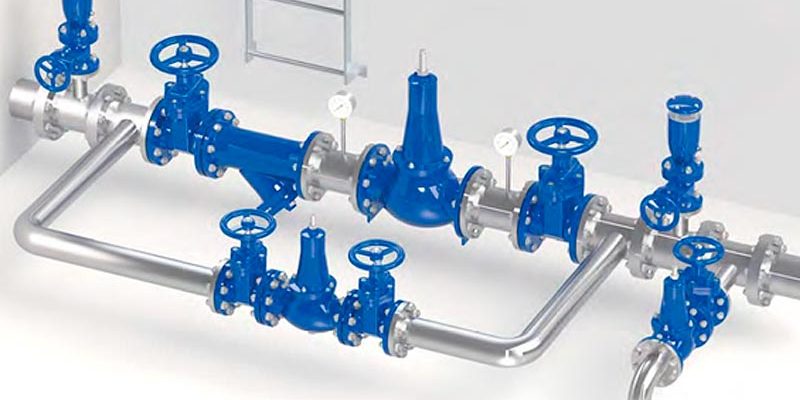
Protection against Water Hammer
Water hammer is one of the problems encountered in water treatment plants, especially in public water systems. Engineers tend to focus on two main points: designing an efficient system and protecting this system from potential problems.
What is a Water Hammer?
One of the major problems that can cause severe damage or failure in any water treatment plant is the sudden shock waves caused by water hammers. A water hammer, also known as hydraulic shock, is a pressure surge or shock wave that occurs when a fluid (usually water, but sometimes gas) is forced to stop or change direction suddenly.
Effects of Water Hammer
This pressure wave can cause significant problems, ranging from noise and vibration to pipe collapse and system failure. If the flow is suddenly shut off at the outlet (downstream). The mass of water before the closure continues to move forward at a certain velocity. Resulting in the accumulation of high-pressure shock waves. When this flow collides with the closure, it has nowhere else to go but back to the source.
In household plumbing, this is experienced as strong banging sounds resembling a hammer. This usually occurs near the internal water source in the house, such as the service tank.
How to Protect the Station against Water Hammer Damage
Protecting water treatment plants or pipelines from sudden water shock is not a new concept and is used in both compressed and non-compressed systems. In non-compressed systems, air traps or protective pipes (open at the top) are added. These methods provide a cushion to absorb the water’s motion force or a path to redirect the water hammer peak. In some hydroelectric power stations, what appears to be a water tower is one of these devices known as a surge tank.
In compressed water systems, hydro-pneumatic tanks are a very effective means of protecting the system from sudden water hammer damage. Similar to a surge protector for electronic devices, a hydro-pneumatic tank is designed to store water. And provide the required compressed air cushion to absorb or mitigate the shock wave before it reaches the water treatment system.
Hydro-pneumatic tanks are often much larger than most people would expect. Very small tanks are risky as they provide very little protection and a false sense of security.
Water is approximately 800 times denser than air. As a result, air can be compressed while water cannot. A hydro-pneumatic tank utilizes the different densities of water and air. Then compressed air is applied to provide an air cushion for the water stored in the surge tank. The air pressure in the tank will change as the volume of water rises and falls.
Home Protection Against Water Hammer Damage
Most homes built in the past two decades have small protection tanks or pulsation dampeners similar to hydro-pneumatic tanks integrated into industrial water treatment systems.
These home tanks typically have a capacity of about 4 or 5 gallons. Unlike their industrial counterparts, there is no compressor providing compressed air. These home tanks are usually located near the water heater tank and mitigate the shock of water hammer through an air pocket. The result of protecting the industrial water system and protecting the home pipes is almost the same in theory.
Our Carewater experts are pleased to answer your questions about various water hammer protection methods and a comprehensive range of water solutions.


























